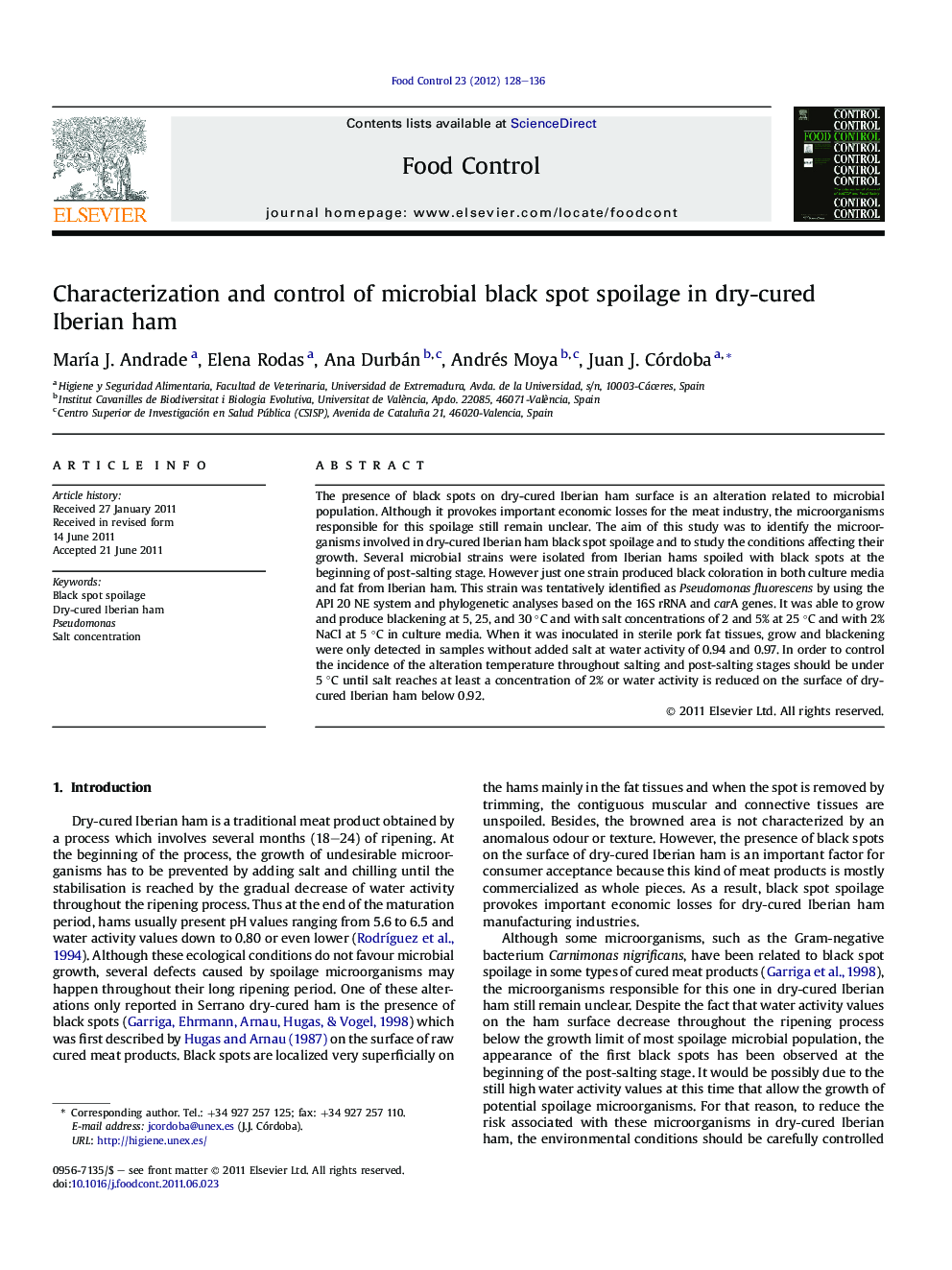| Article ID | Journal | Published Year | Pages | File Type |
|---|---|---|---|---|
| 6393737 | Food Control | 2012 | 9 Pages |
The presence of black spots on dry-cured Iberian ham surface is an alteration related to microbial population. Although it provokes important economic losses for the meat industry, the microorganisms responsible for this spoilage still remain unclear. The aim of this study was to identify the microorganisms involved in dry-cured Iberian ham black spot spoilage and to study the conditions affecting their growth. Several microbial strains were isolated from Iberian hams spoiled with black spots at the beginning of post-salting stage. However just one strain produced black coloration in both culture media and fat from Iberian ham. This strain was tentatively identified as Pseudomonas fluorescens by using the API 20 NE system and phylogenetic analyses based on the 16S rRNA and carA genes. It was able to grow and produce blackening at 5, 25, and 30 °C and with salt concentrations of 2 and 5% at 25 °C and with 2% NaCl at 5 °C in culture media. When it was inoculated in sterile pork fat tissues, grow and blackening were only detected in samples without added salt at water activity of 0.94 and 0.97. In order to control the incidence of the alteration temperature throughout salting and post-salting stages should be under 5 °C until salt reaches at least a concentration of 2% or water activity is reduced on the surface of dry-cured Iberian ham below 0.92.
⺠P. fluorescens S12N was responsible for blackening in dry-cured Iberian ham. ⺠To identify S12N a combination of morphological, biochemical, and molecular methods is necessary. ⺠To control black spots in hams temperature below 5 °C should be ensured at salting and post-salting. ⺠A homogenous distribution of salt in the whole surface of hams during salting is essential. ⺠Salt concentrations of 2% or water activity 0.92 inhibit black spots at the surface of hams.
